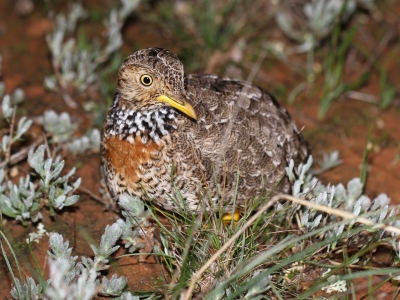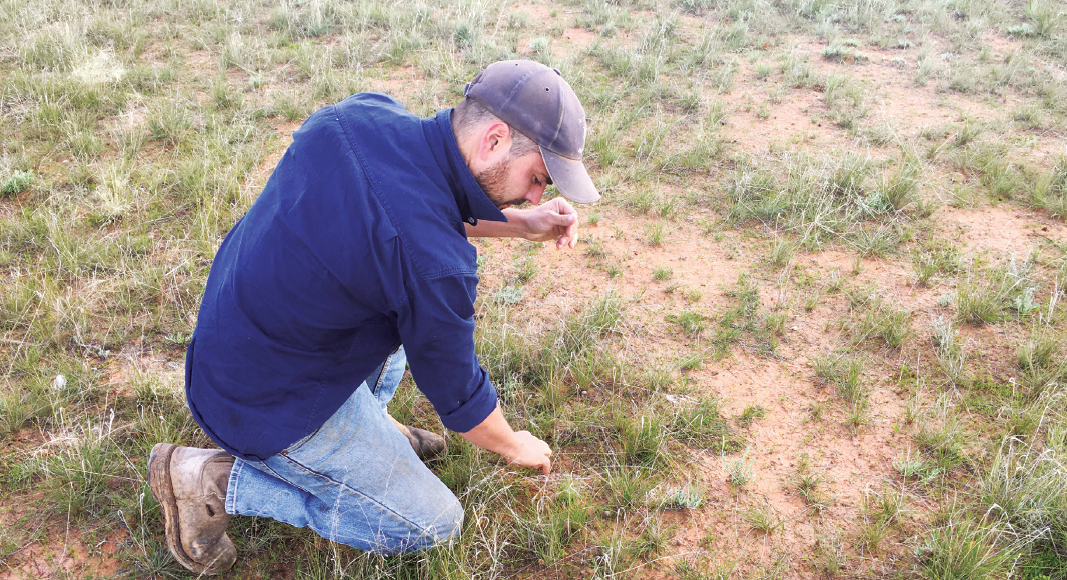Plains-wanderers help save a 'sheep' load
06 Sep 2022
PRODUCTION ADVICE & NRM NEWS - SEPTEMBER 2022 - ENVIRONMENT
By Sam Steel, Land Services Officer - Plains-wanderer Project
P: 03 5881 9941 | M: 0427 718 709 | E: samuel.c.steel@lls.nsw.gov.au
You "herd" it here first; it's "woolly" true that, far from being an ecological enemy, sheep grazing can play a role in saving one of our most endangered bird species.
At Bullawah Station north of Hay, The McCullough family, Rhys, Father Craig, Mother Wendy, and brother-in-law James have seen a five per cent increase in lambing, as well as financial savings and an improvement in the health and condition of the flock since improving the habitat for the endangered Plains-wanderer.
Plains-wanderers are small, ground-dwelling birds found in the native grasslands of the Murray & Riverina. Their natural habitat has been largely destroyed or degraded by clearing, overgrazing, and introduced grasses.
Local Land Services ‘Bringing Plains-wanderers back from the brink’ project offers support for landholders to manage paddocks for livestock production and plains-wanderer conservation. The scheme offers incentives for pest and weed control, fencing, water points, saltbush plantations, stock management areas, and feeding infrastructure.
Funding from the project has helped the family construct a 4000ha stock management area with feeders and water, keeping their flock in better condition.
Rhys said: “Just a few simple changes means we have been able to cut costs, particularly in supplementary feeding significantly. We don’t have to muster as much, our sheep are healthier, and we’ve seen a 5 per cent increase in lambing. In the past, we relied on annual pastures, which created a short supply of pasture feed, particularly during drought. Maintaining sufficient quality feed was costly and time-consuming, and we wanted to avoid that. We were covering close to 100km to feed out three times a week, which impacts diesel costs and wear and tear on people and equipment.”
“The funding helped us introduce a more sustainable grazing routine, with more perennials in our pasture which cope better with irregular rainfall. We are also rotating the flock into stock management areas to rest paddocks. This increases the farm's resilience over dry years, and limits feed curve variability. The preferred habitat of Plains-wanderer ties in perfectly with this grazing program. So, the project gave us an opportunity to support the Plains-wanderer, but it has also helped increase the overall productivity and sustainability of the farm.”
“The area we chose for stock containment has shade for stock, but traditionally it was pretty flogged out, so we were not losing any productivity by creating the stock containment areas. We instead gained an area we can utilise regularly that enables us to decrease costs and allows us to rest plains-wanderer habitat. We have also noticed since utilising rotational grazing that more palatable grasses such as wallaby grasses are making a comeback where previously less palatable grasses such as spear grasses dominated. We have also noted other herb species appearing within the habitat.”
Rhys said as well as grazing, the new multi-functional stock containment areas are ideal for holding stock for shearing, drenching, and bringing stock to market.
“We are a family business, so any changes we made had to have low levels of risk for us to be involved. The Plains Wanderer project allowed us to transition from an overreliance on annual-dominated pastures and supplementary feeding to perennial-dominated pastures. This will help us manage drought years.“

Top photo: Rhys McCullough inspecting plains-wanderer habitat (S.Steel)
Bottom photo: Female plains-wanderer (D.Parker)
This project is supported by Murray Local Land Services and Riverina Local Land Services through funding from the Australian Government’s National Landcare Program and the NSW Government’s Saving our Species program.
